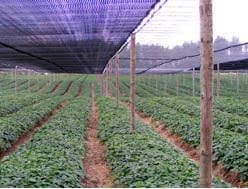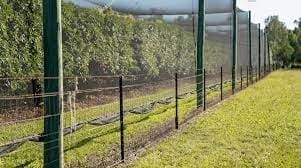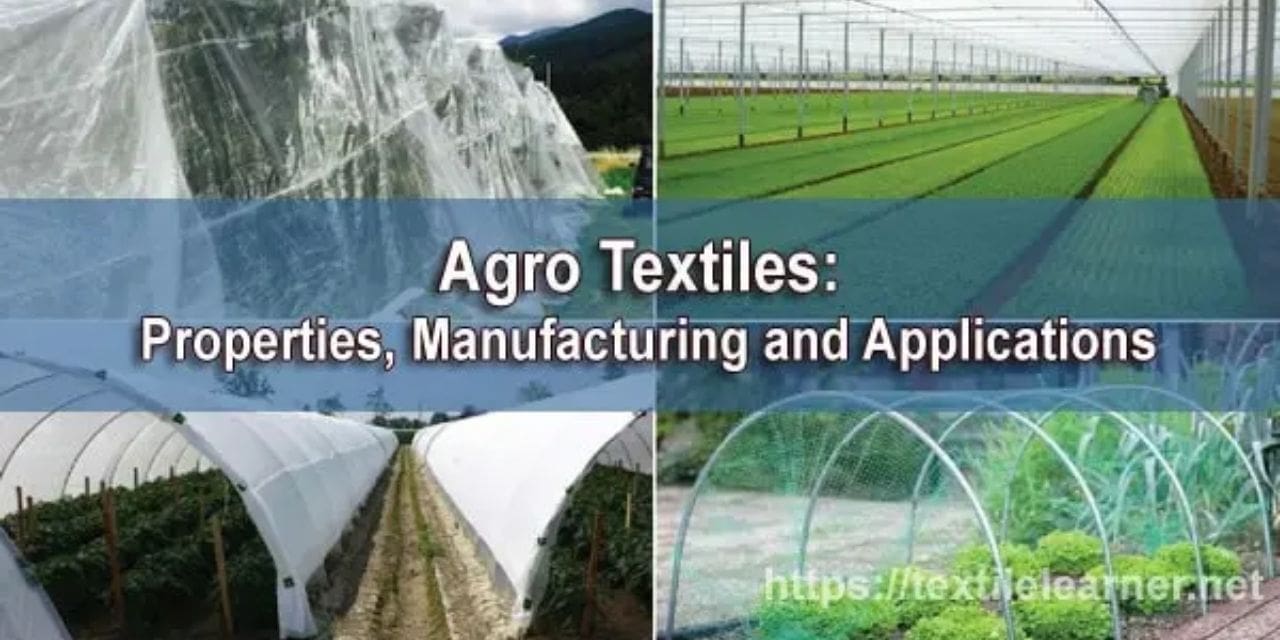Shuchi Shrivastava* Sachindra Vishwakarma#
, *Shuchi Shrivastava Faculty, Department of Textile Technology, Shri Vaishnav Polytechnic College, Indore (M.P.)
#Sachindra Vishwakarma, Student, Department of Textile Technology, Shri Vaishnav Polytechnic College, Indore(M.P.)
ABSTRACT
Agricultural textiles are the most important and growing sector of all industrial textile sectors. Covers all fibers from horticultural applicationsto fish and livestock applications.
However, it can be said that the importance of agrochemical fibersis of global importance. Also in India,some applications of agrochemical have produced excellent results and have a positive effect on the growth and vegetables. The main of thisstudy is to provide an overview and importance and production of purpose of agricultural fiber various crops of textiles and represents the prospects of agricultural textiles for the future of India. Some market analysis was performed for this study, which suggests an increase in local production and use of agricultural machinery. Another objective of this study is to provide entrepreneurs, entrepreneurs and entrepreneurs with an understanding of this sector and encourage investment.
Keyword: – Agro textile,Agriculture, Synthetic fiber,Horticulture,Protection.
INTRODUCTION
Agriculture, Forestry,Horticulture,Floriculture,Fishery,Landscape Horticulture, Livestock, Aquaculture, and Agricultural Technology. All of these industries collectively referred to as Agricultural Technology Sector. Agro textile is the application of textile materials in fields. This is a very important part of industrial textile. The word “AGRO TEXTILE” is now used to classify woven, non-woven and knitted fabrics used in Agricultural Industry , including livestock protection, awnings, weed and insect control, and cultivation. season extension. As the global population of 4, continues to grow, the pressure on crops has increased. Therefore, is needed to increase the yield and quality of agricultural products. However, does not fully satisfy the traditionally accepted methods of pesticide and herbicide application. In today’s agriculture and horticulture sector, they realize the need of tomorrow and have made a choice in favor of different technologies to achieve higher yields, quality and taste of produce.
FIBERS USED IN AGRO TEXTILE
Man-made (synthetic) fibers are preferred over natural fibers for agricultural use due to their strength, durability, and other properties that make them suitable for agricultural Natural Fiber Pesticide, on the other hand, has specific uses as well as decomposes over time as a natural fertilizer. high use. to act
PROPERTIES USED FOR AGRO TEXTILE
1. Tensile Strength
The tensile strength of an awning mesh can be a decisive factor in its durability and service life. A good tensile strength is therefore an essential parameter of shade netting.
2. Bio- degradability
Natural fibers such as wool, jute and cotton are also used where biodegradability of the product is required. Natural polymers provide the biodegradability benefits of , but have a shorterlifespan than synthetic materials.
3. Abrasion Resistance
The wear and tear the shading mesh is subjected to can be either the material itself (material to material) or a stray animal. As the shade mesh wears, it creates holes where animals and pests can enterthe structure and damage the crop.Awning nets require good abrasion resistance.
4. Protection Property
The wear the shade mesh applies to can be either the material itself (material to material) or a stray animal. As the shade mesh wears, it creates holes that allow animals and pests to enterthe structure and damage the crop. Tarpaulin nets require good abrasion resistance.
5. Protection Property
It must have the properties of balancing temperature and humidity by protecting it from the wind and creating a microclimate between the land and the nonwoven. This increases the temperature in the root zone. It is that causes early harvest, sufficient rigidity, flexibility, uniformity, elasticity, biodegradability, dimensional stability and resistance to moisture. Germicidal coating to preventsoil contamination (up to 2% of total mass).
ADVANTAGES
Agro textile is an environmentally friendly technology that reduces the need for fertilizer, water, harmful
pesticides and herbicides, provides a healthy crop, and is environmentally friendly. Prevents soil drying and increases yield. Thermal Protection fabric is treated with UV stabilizer, saving up to 40% energy in the greenhouse, which prevents stains and improves color uniformity. Increases the early maturation of crops and non-seasonal plants and protects them from climate change and its impacts. Agro textile prevents branch breakage, improves crop cleanliness, simplifies harvesting and provides more space. Agricultural Textile can improve the quantity, quality and safety of agricultural products due to excellent environmental resistance, mechanical properties, ease of processing and durability characteristics.
Currently, textile products are operated as a relatively important part of agriculture under climate situations and production conditions.
Exceptional ecology, mechanical properties, simple methods, ecological characteristics, agricultural products, agriculture, resource safety, agricultural environmental safety, market competitiveness of products can improve the quantity and quality and safety of the product. The yield yield and product improvement and increased quality by increasing the quality. These fabrics protect the farmer from harmful pesticides. Textile products such as AGRO settings and shadows on the column screen can save 40% to the energy used in the heating greenhouse. It has also been found that the use of agricultural acids generates development as a fruit and prevents color homogeneity and prevents dyeing. As a result, an agricultural fiber use critical roles to help the waiting to help, eliminate climate change, change of weather conversion, and generates optimal conditions for improving plants. Therefore, demand for fiber products in the field of Agriculture has enumerated and role of herbicides to reduce the use of toxic pesticides, reducing the use of toxic pesticides and to create emphasized cultures of healthy agriculture.
SOME APPLICATIONS OF AGRO TEXTILE
1. Ground Cover Net
Ground Cover is a very versatile landscaping and horticultural fabric for long term weed control, moisture retention and separation. It effectively inhibits the competitive growth of weeds, retains soil moisture, maintains a clean surface, protects from UV rays and creates a favorable environment for healthy plant growth. Ground cover can save money and minimize the use of unwanted herbicides. It is mainly used in border and rock gardens, nurseries, greenhouse floors, soft fruit beds and orchards, pavement areas, horse bridles and seed collection areas. We use 100% polypropylene.

Figure: Ground Cover Net
2. Windshield/ Wind Protection Net
Windscreens are used in agriculture to protect fields of young plants, fruits, trees or crops from wind damage. Installing the windshield at a right angle will help prevent extinction or destruction of young seedlings and mature plants. The nets used here help to reduce the effects of strong winds and keep the sand and salt of areas close to the sea floating in the air. Protecting plants from strong winds also promotes plant growth and reduces the number of irrigation required. It also prevents the plants from cooling down by the wind.

Figure: Windshield
3. Insect Meshes Net
Various pests, such as powdery mildew and scale beetles, often infect some ornamental plants and vegetables. Clearly woven and knitted nets made of polyethylene monofilament to protect against pests in greenhouses and tunnels or to keep pollinating insects inside. A thin woven net protects plants from insect attack (no pesticides used).

Figure: Insect Meshes Net
AGRO TEXTILE IN INDIA
The use of agrochemical fibers in India is diverse. In India, farmers are using alternative ingredients for
pesticides. Most farmers cannot afford to directly purchase pesticides and instead use alternative materials to achieve their pesticide purposes. The insect screen is not actually an insect net, but it does use a fine mesh that serves its locally intended purpose. These nets are available in a variety of mesh sizes depending on the end use. Some brown mesh bags have been shown to be used to grow mangoes, watermelons, eggplants, gourds, and pumpkins. No true mulch in India. Most farmers do not know what mulch is. They use different materials such as PE sheets, jute bags, and dry leaves to act as weed control covermats. Sometimes water hyacinth,rice straw is used for mulching. In India, cows are raised indoors. Pasture-grazing cows primarily require the use of udder nets. Therefore, the use of papillary nets here is verylimited.
CONCLUSION
Today, AGRO fibers play an important role in monitoring the production environment of harvest, eliminating climate change and weather plant growth. Taking Hi-tech Agricultural and generate optimal countries for Used with Fiber Structures can improve quality and total conditions, Technologies agro product output. different types of fiber structures are used in Open Field as well as House / Poly House, Green House to monitor environmental factors such as temperature, water and humidity. In agricultural areas, is a healthy agriculture, to reduce the use of textile products and unauthorized pesticides and herbicides. The characteristics of a unique production technology and a mixture of products in this field AGRO fiber sector, pesticide and chemicals less than, herbicides. “Agro textile” provides a multidimensional perspective and agricultural industry. Fabrics have solutions to the challenges proven to be flexible in their facing the suitability for specific geographic locations. Now it’s our turn to carefully build this early technology into and contribute to the national economy

